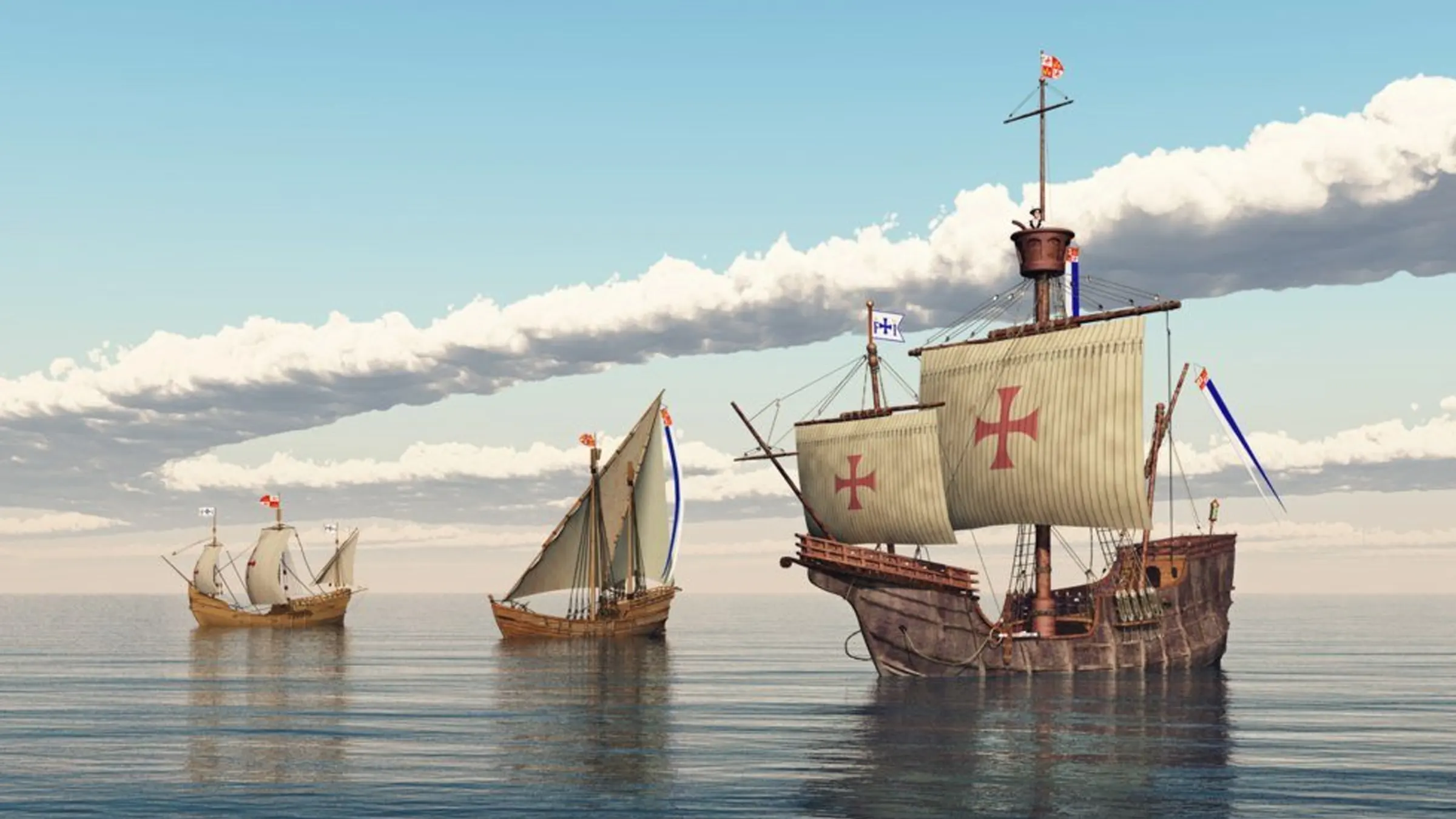Discovery of Honduras by Christopher Columbus

Christopher Columbus discovered Honduras on his fourth and last voyage, reaching the Island of Guanaja.
He left Cádiz in the first days of the month of May 1502 to make his last trip to the lands he had discovered. He was accompanied by his brother Don Bartolomé Colón and his son Fernando, 13 years old. The expedition was made up of four boats, called La Capitana, Gallega, Vizcaína and Santiago de Palos.
He crossed the Atlantic without mishap and reached Santo Domingo, where the new Spanish authorities forbade him to disembark, even though a storm was forecast.
The storm broke out, and Columbus, thanks to his experience as an old sailor, managed to prevent his ships from being destroyed by the fury of the wind and the sea.
As soon as the storm passed, the four boats continued sailing heading southwest. On July 30 they arrived at the island of Guanaja, which Columbus called Isla de los Pinos because of the forests of these beautiful trees that cover its hills.

Don Bartolomé landed on the island accompanied by a group of sailors, while Columbus, tired and sick with gout, contemplated from the flagship the strange vegetation of coconut palms and pines.
While the expeditionaries were in front of Guanaja, they saw a canoe of considerable size approach its beaches. In it came a group of indigenous people, protected under an awning of mats. They were merchants who traveled between the Bay Islands and the north coast of Honduras.
«These Indians, of whom Columbus wrote in his diary, are more civilized than those of the Antilles, since they have not shown astonishment at the sight of the ships, nor fear when approaching the Spaniards; besides, they are somewhat more dressed than the other islanders, and the kind of goods they trade is better.’
Columbus immediately headed for the mainland of Honduras, whose mountains can be seen from Guanaja. On August 11 he reached the entrance to the bay of Trujillo and gave the sandy point that the coast forms in front of it the name of Punta Caxinas.
Continuing sailing towards the East, the four boats arrived on August 14 at the mouth of the Tinto River. Don Bartolomé Colón landed in this place and took possession of the new lands in the name of the kings of Spain.
Because this ceremony was held there, Columbus gave the river the name Rio de la Possession. Under a corpulent ceiba tree that grew on its banks, Fray Alejandro celebrated the first mass that was said on the mainland of the American Continent.
Hundreds of indigenous people came to watch the ceremonies of the newcomers, to whom they presented birds, fish, grains and fruits. Most of the Indians were naked and with their faces painted red and black. But what most attracted Columbus’ attention were the large holes in their ears, which is why he called the place La Costa de las Orejas. These Indians with deformed ears were jicaques or payas.
He continued exploring the coast towards the East, hoping to find a strait or passage through which to continue the journey until he reached the great cities of India.
He was sailing in front of the Mosquitia, when a furious storm broke out, which almost made the small boats shipwreck. «I have seen other storms, wrote Columbus to the Kings of Spain, but they did not last as long or with such fear. «Twenty-eight days the bad weather lasted.
But on September 12, when rounding the cape where the Central American coast turns sharply to the south, Columbus found the sea calm and in thanksgiving he baptized the cape with the name of Gracias a Dios.
Driven by favorable winds, the ships continued to explore the coast to Panama, from where they undertook the return trip to Spain a few months later.
After many serious setbacks and overcoming numerous dangers, Columbus landed sad and ill in Sanlúcar de Barrameda, at the end of 1504.
The discoverer of America died in the city of Valladolid on May 20, 1506. He died with the belief that in his travels he had reached the shores of Asia.


